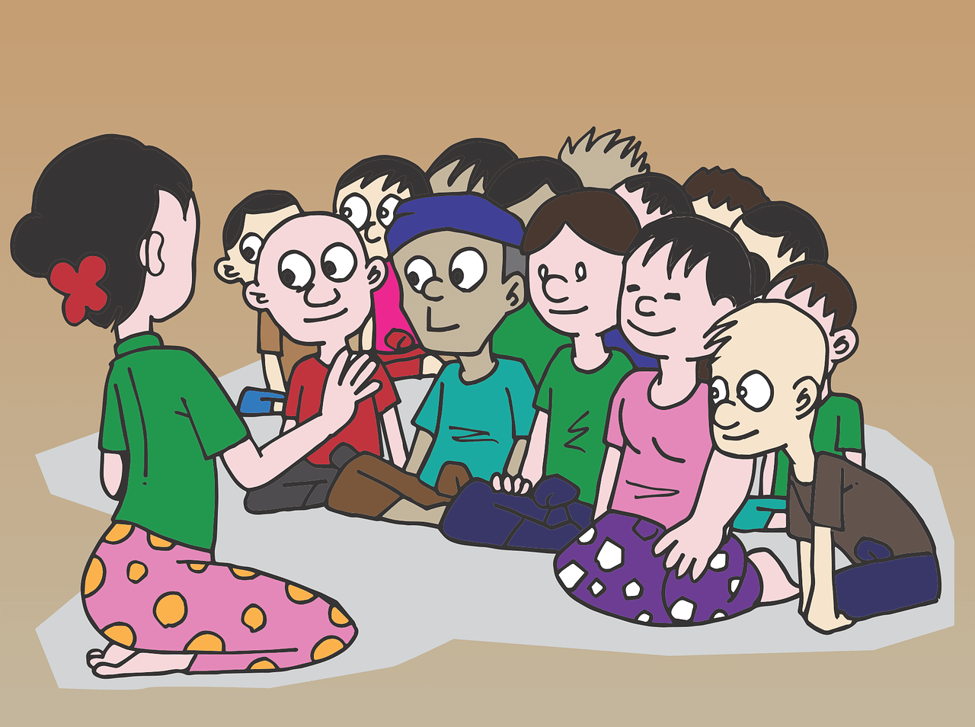Parenting
So You Have A Picky Eater?


If you have a picky eater, mealtime can make you feel like you want to pull your hair out. It is frustrating for parents to watch their child only fiddle with their food at dinner or not even touch it, claiming they “don’t like it.” So what happens? Thirty minutes later guess who is hungry? You guessed it. Your little picky eater.
Jamie’s mother was concerned about Jamie’s lack of interest in food. She stated, “Jamie never wants to eat anything I fix for dinner. What can I do to encourage Jamie to eat the meals that I have prepared?” I came up with the following ten tips for her. You may find them useful as well.
TIP: INVOLVE JAMIE. You can have Jamie help with planning the menu or meal preparation. Kids are less likely to “turn up their nose” at something, they had a hand in.
TIP: PLACE A LIMIT ON JAMIE. Let’s think that Jamie is playing with her food at dinner and not really interested in eating it. Mom says, “Jamie, I will be serving breakfast at 7:00 a.m. try to eat enough to make it to then. You decide how much you will need. Oh! We will be clearing the table in _____ minutes.”
When Jamie comes to you later that evening complaining of being hungry. With an understanding tone, remind her that you will be serving breakfast at 7:00 a.m. as usual. Jamie will most likely be persistent about getting something else to eat. It is important that you follow through with the limit you have placed. Otherwise, Jamie learns that you do not mean what you say and you lose your credibility with her. You may have to tell her several times that you will be “serving breakfast at 7:00” until she realizes that you’re not going to give in.
Jamie: “Mom I’m hungry. Can I have some cookies?”
Mom: “Kids who eat all their dinner are welcome to have a snack after.”
Jamie: “But mom I’m really hungry.”
Mom: “I know Jamie. I would be hungry too if I ate as little as you did for dinner, but don’t worry I will be fixing a big breakfast at 7:00 a.m.”
Jamie: “What? Do you want me to starve?”
Mom: “I’ll be serving breakfast at 7:00 Jamie”
Jamie: “This isn’t fair.”
Mom: “I’ll be serving breakfast at 7:00 Jamie”
Jamie: “Fine!”
TIP: NOTICE THE EXCEPTIONS. Call attention to the times when Jamie eats most of her meals. “Wow! Jamie, you ate everything on your plate. Good job. You should be proud of yourself.” Too often, we only notice the negative aspects of our children’s behavior and that is what we reinforce with our negative attention.

TIP: CATER TO JAMIE’S DESIRE TO BE “BIG”. “ You won’t like this halibut, Jamie. Usually, adults are the only ones who like halibut.” Guess what may just become Jamie’s new favorite food?

TIP: PROVIDE VARIOUS CHOICES AROUND MEALTIME. “Would you rather sit by me or by mommy?” “You can eat with a fork or a spoon which would you prefer?” “Do you think you will need more potatoes or is that enough?” “Have as much as you think you will need to make it to dinner.” “Milk or juice?” “Should we eat at 7:00 or 7:30?”

TIP: BE A GOOD ROLE MODEL. “You know dear, although spaghetti is not my favorite, I will eat it because I know how hard you worked to make it.”

TIP: EXPOSURE. Encourage Jamie to try a variety of foods early on in her life before she knows anything different. Some children may have never thought eating liver was gross if it hadn’t been for what someone else had set their expectation to be.

TIP: PROVIDE SOME FLEXIBILITY. Let’s remember there are some foods that certain children can not stomach. If Jamie has a problem with spinach, but it is part of that particular meal, try to have other items. This way she can get her fill up on once everyone has their share. But, this should be the exception rather than the rule.
Try letting Jamie dip her food in sauces, dressings, syrups, and ketchup. It may make them taste better to her.

TIP: MAKE MEALTIME ENJOYABLE. Try to talk about things other than eating at mealtime. Dinner is a great time to talk to Jamie about how her day went. During breakfast, you can discuss what everyone has planned for the day.
Anyone pitching in to help prepare a meal can teach Jamie an important family value. An added bonus for children is that it can teach them important skills. It can be about thinking skills like timing, measuring, colors, comparisons, counting, and cause and effect.
Be creative in the ways that you dish up Jamie’s food. Mold her mashed potatoes into a volcano. Then, cut her meat or sandwich into bite-sized pieces. Poke toothpicks in them and layout veggies in the shapes of letters or numbers. You can also use a drop or two of food coloring to make it more interesting.

TIP: LIMIT SNACKING. For children to be hungry enough to eat a meal they usually need to go two or three hours without food. However, it is difficult for children to go from noon to 6:00 p.m. without food. A nutritious snack after school would be fine to get Jamie to dinner, still having her appetite.

TIP: RECALL PAST SUCCESSES. Think back to the times when Jamie had eaten her meals. What were you doing? Were you placing a lot of emphasis on her need to eat her food? What was she doing? What were you eating? What happened before the meal? These kinds of questions may help you realize some of the things you or Jamie is already doing which assist her in becoming a better eater.
You may like
Parenting
Strategies for Resolving Conflict with Your Children

Conflicts between parents and children have gone on since time began. As a child starts to learn how to talk, it seems they have likewise learned how to say ‘no.’ And they often say it often about everything from bedtime to eating their vegetables. What’s even more maddening is when they fight you on things you know they do want, like a trip to the park. It begins to seem as though children exist to be contrary.
Thankfully there’s help available. Below is a list of four strategies that will help you resolve conflicts with your child. What’s even more amazing is that these techniques work well whether you’re dealing with a toddler or a teenager.
- Don’t get sucked into the tension of the moment. Conflict with children quickly escalates. One demand becomes another until you’re so wrapped up in the whirlpool that you can no longer think or make a rational decision. At that moment you need to step back and take some time away. Take a deep breath and be calm. It might be time to let someone else watch the kids while you step outside and take a walk.
Walking away from a conflict with your child is something of an art. The last thing you want is for the child to think you’re not listening to what they have to say. But every argument reaches that point where no one is saying anything new. It’s about here that things start to get personal, and indeed uncomfortable. That is the point of taking a break. But even this takes skill. Excuse yourself quietly. It’s not the time for a dramatic exit. Whatever the case, you’re going to have to let your own emotions steady out before trying to help your child to calm theirs.
- Calm down. Clearing your head will help you to be both calmer and more rational. Once you’ve removed yourself from the situation, then take a few minutes for yourself. Breathe deeply. Practice mindfulness or even a lot of prayer until you’re in a better place and able to be in control of yourself. Find that inner peace.

- Become an active listener. When your child is upset about something, before assuming they’re wrong, ask them to explain why they’re upset. Then listen to their answer. Ask questions. Clarify. And then repeat back to them what you thought you heard them say. It might be that they have a legitimate concern. Or it might be they’ve misunderstood the situation completely. Either way, you’re now in a better position to help find a resolution to the situation.
- Practice empathy. Realize that there might be something more going on with your child than there appears to be on the surface. That will not only help you to calm down, but also might show you a possible solution, or at least a new way to address your child in a way that’s respectful and more compassionate. Keep in mind that your insights might well show you that the problem is with you.

Source: Pixabay - Empower your child. Allow them to make some of their own decisions. For example, rather than getting involved in a long fight over what to wear, allow your toddler to choose at least part of their outfit. It’s about learning how to pick your battles, saving the fights for the things that matter.
- Reconcile. Try apologizing. Recognize that it does take two people to get into an argument. Apologizing acknowledges the part that you’ve played in the situation and invites your child to do the same. This is a great way to teach your child how to resolve conflicts in a healthy way.
- Reconcile. Try apologizing. Recognize that it does take two people to get into an argument. Apologizing acknowledges the part that you’ve played in the situation and invites your child to do the same. This is a great way to teach your child how to resolve conflicts in a healthy way.

Source: Pixabay You don’t have to live in dread of a conflict with your child. Having conflict is inevitable. What you do need is to learn how to take back control when the conflicts happen. How you deal with conflict says a great deal about you as a parent.
Remember, it’s up to you to decide how you want to react to these situations. Being able to keep your cool in trying situations is an invaluable skill and one well worth cultivating, especially in parenting.
By staying calm and practicing these steps and you’ll soon find the road back to a peaceful resolution with your child, regardless of their age. And in the process teaching them the invaluable lesson of dealing with conflicts in a healthy way.
Parenting
Six Ideas To Help You Discipline Your Kid


Got a kid? Love him or her? Of course, you do. So when he or she misbehaves on a consistent basis, what’s the best way to administer discipline?
Well, as you may be aware, there is a wide range of thoughts on this subject. One school of thought teaches hands-off to let the children figure it all out on their own. No punishment or reward systems. Another extreme says that the Singapore model of “canning” people for littering is a good one.
Most of us find ourselves between these two nutty positions. And the word “nutty” is being charitable. If you don’t think so, then stop reading. You’re a lost cause and should find yourself in a nice rubber room so that you don’t hurt yourself or anyone else.
Every child responds to anything in different ways. Some kids have a very high “pain” threshold. They can take whatever penalties you exact as they stubbornly refuse to do what they should do. There are others who can be easily motivated by various token systems.
So how do you find out what method of discipline will work for your kid(s)?
In a word: experiment! Here are six ideas for proceeding.
#1 – Put on your “scientist hat.”Research what’s out there. No author knows your kid better than you do. Many research studies can lead to various strategies for your kids. So knowing what’s been done before is a very good strategy in and of itself.
#2 – Once you know what you can do, you can now start interacting with your kid(s). Learn to differentiate discipline and abuse as we live in a reality wherein two can be seen as the same thing. So be careful as you try different discipline ideas.
Important note: Remember your main goal in doing these ideas. If you want to raise good and intelligent children, be patient to see if one thing applies to your children.
#3 – When you find something that seems to work, don’t think you can finally relax. Don’t confuse short term hits with long term success. Your child may be responding well to your discipline. But when it wears off, your child may very well revert to the old behaviors that you tried to change. The tough phase will last for more than a few weeks. So give things at least 3-6 weeks to see if the changes are enduring.
#4 – Tweak before you make major changes in your efforts. For example, suppose you are rewarding your kid(s) with pizza at the end of the week if they do something right. You assume that they’re responding to novelty rather than the measures themselves. Rather than junking the measures, tweak them a bit to determine if your suspicion is valid. For example, you might vary the food rewards. Say, “Look – if you do good things, you get to pick what we have for Friday dinner.” You might be on the right track and tweaking gives you a chance to really find out.
#5 – If tweaking doesn’t work, then, by all means, try new approaches.
#6 – Finally, be humble enough to know that you might need professional support. This can be in the form of a therapist or counselor. You’ve got to be careful here because these professionals have different competency levels on how to deal with your case. Some would suggest certain drugs as the initial therapeutic intervention for your child. You have the right to be skeptical in such situations. Listen to your own inner voice here. No matter how good the intentions are, many therapists simply get things wrong. If the one you’ve initially selected isn’t right for your child or your family, try another.
There are also organizations that can help you find a decent therapist that you need. America and many other nations are rich in resources to help families. Look into them if your problems grow too intense for you to handle on your own.
Finally, use common sense. It may sound strange but you’ll be the only one to make the final decision. Regardless of any professional help, books, or online forums that you encounter, you’ll be responsible for your child. Use the best intelligence you can and proceed with caution.
Parenting
Parenting – Roots And Wings

“Parents give their children two great gifts—one is roots, the other is wings.” This is an adage from the old Hallmark card that I’m sure many of you have heard of.

As parents, we pray for our children’s safety, health, and happiness. We do everything we know to help make these things happen to them.
At some point in our lives, we developed the principles and values that guide us. Our parents and/or caregivers had a big influence on this. Some of us have adopted the values of our parents and continue to live by them today. Some of us choose to do the exact opposite of what our parents would do.
Yet, most of us are somewhere in the middle. We have accepted some of our parent’s values and rejected others. This is a normal process of development. As parents, we tend to question our children’s resistance to our ideals and values.
It might be because we’re worried about their safety in their decision-making. We can see that they’re into unhealthy behavior or heading down a life path that will lead to unhappiness. Whatever the reason, we get scared when our children’s values differ too much from our own. Dealing with their emotions is different than dealing with your emotions.

Teach your children to cope with emotions. It used to be very popular to make children “suck up” their emotions, especially boys. It is also common to assign emotions to girls that they may or may not have. This can create a generation of people who have trouble managing their emotions. The cycle continues as they pass it down to their children. Therapy bills skyrocketed.
Many studies have indicated that dealing with emotions would be an essential life skill that children should learn. Proper emotional stability is crucial in your child’s interpersonal relationships.

What can we, as parents, do? First of all, as we raise our children, we are helping to strengthen their roots. This is the first gift a parent gives their child. How does one strengthen roots? We tend, we nurture, we feed, we cultivate—all to develop strong roots.
Sharing our value system with our children is critical to this process. Note that people would pay more attention to what they see, as opposed to what they hear. Thus, if you’re a parent who tells your children it’s wrong to smoke while you’re taking your cigarette, they might get the wrong interpretation.
Separation and individuation are the developmental tasks of adolescence. It is the time when children are trying to separate themselves from their parents to some extent. It can be a very frightening time for parents. What do we do? This time you can give the second parental gift – wings.
We want to give our children gradual “flying” lessons. Children are not yet ready to go out on their own without their parents’ protection. This must be a gradual process.
In her book Peaceful Parenting, Dr. Nancy Buck says it best. “We limit freedom for as long as it takes to teach responsible behavior and then we give back the freedom. We want our children to learn the gradual process of making decisions.
During their teenage years, it’s ideal to allow them to begin the set their own values. If you’ve planted and grown their roots well, then the next process will go smoothly.

Remember that your child is doing nothing different than what you did. You once wrestled with your parents’ values and now your teen is resisting your values. It has a very different feel to it, but it’s the same nonetheless. You may say that your value system works fine for you and your teen needs to see things the same way you do. However, the reality is that you can’t own your children’s value system. You are not them. You do not occupy their skin. They’ll be the only ones to decide for themselves and will have to face the consequences of it.
Let’s use this scenario. You have a teenage son or daughter who works as a server in a local diner. They then confronted a customer over a racial remark that it made. Upon hearing it, you can either be proud that your child stood up for equality or you can feel bad about what they did.
Over the next few days, you had several conversations about the incident. You were still unable to get them to understand that what they had done was inappropriate. And they come back to you and say, “Mom, I know you want me to say that I was wrong but I’m not ashamed of what I did. In fact, I would do exactly the same thing if the situation presents itself again.”
You have to practice what you preach. Their value system does not match up with yours. It could be very clear to you that they are “wrong”; but, in their world at that time, they did the “right” thing for them. When you give your child wings, you need to allow them to do things their own way even if you are sure a better way exists. You can offer your better way in the form of a suggestion. But also allow your child to decide and face the outcome of their decision.

This process helps our children become better decision-makers. We talk with our children about all the choices that exist and then examine the pros and cons of each choice. After that, we must step back and allow our children to make the decision that’s right for them. Talk about how things worked out but never protect them from the results of their decisions. This is where learning takes place and emotional intelligence is maturing.
Let your child express emotions without judgment. When your child is showing whatever emotion they are having, allow them to express it. If they are acting out in an unhealthy manner, teach them to redirect it to a proper form of expressing it. Without any prejudice, they will learn to express their emotions in a healthier way.

Keep the lines of communication open. Have an open-door policy with your children so that they are not fearful of coming to you when they have a problem. Ask open-ended questions instead of “yes” or “no” questions. By doing this, they can express what they want to talk about. Do not show your fear or judgment as they talk to you. It’s okay to say how you feel once they get it all out. Just make sure to explain that your feelings do not take away from their right to feel how they want to feel.
Show your emotions and how you deal with them. Children learn by example. If you’re not good at handling your own emotions, it will be hard for your child to learn to handle their emotions. When you’re feeling a certain way, express it in words to your child. “Mommy is sad because the dog is sick.” or “Daddy is happy because you got an A on your test.” Or “Mommy is angry because you did not clean your room.” This will help your child to start seeing the signs of emotions. They will also better understand facial and body language cues, increasing their empathy.

Use television shows and news to prompt discussions about feelings. When you watch something on TV that shows the worst scenarios that your child can experience, such as bullying, take that opportunity to discuss it. Ask your child, “How would that make you feel?” and “How will you show your feelings?” or “What is a good way to deal with that situation?” Discussing the potential things that can happen will give your child a frame of reference to call on when needed, without having to experience the situation first hand.
Give your child the tools to deal with their emotions. As a parent, it’s normal to support and help them manage the outcome of your child’s decision. But, don’t intervene on their behalf and also don’t act with the “I told you so” attitude. It doesn’t teach your child anything and would not come to you to talk things over anymore.
As an adult, you have a lot of experiences that you can help anyone to deal with their emotions. The children don’t have that yet. To an eighth grade girl, breaking up with her boyfriend is the worst thing that has ever and will ever happen to them. They feel the love even stronger than we do, as well as the pain of loss. They feel it more because it’s all new to them. Acknowledge that and show them through your example of how to cope. When you do this over and over again you are giving them roots and wings.

